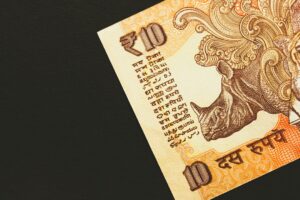Forex bar charts are one of the most popular and widely used tools by traders to analyze and make trading decisions in the foreign exchange market. They provide a visual representation of price movements over a specific period of time, allowing traders to identify trends, patterns, and potential trading opportunities.
Bar charts consist of vertical bars that represent a specified time period, such as one day, one hour, or even one minute. Each bar on the chart represents a specific price range, including the high, low, opening, and closing prices for that time period. The opening price is represented by a small horizontal line on the left side of the bar, while the closing price is represented by a small horizontal line on the right side of the bar. The high and low prices are represented by the upper and lower ends of the vertical bar, respectively.
By analyzing forex bar charts, traders can gain valuable insights into market trends and price movements. Here are some key ways to use forex bar charts for better trading decisions:
1. Identifying trends: One of the primary uses of bar charts is to identify trends in the forex market. By looking at the sequence of higher highs and higher lows (in an uptrend) or lower highs and lower lows (in a downtrend), traders can determine the direction of the market. This information is crucial for making trading decisions, as it helps traders to decide whether to buy or sell a particular currency pair.
2. Spotting reversal patterns: Bar charts can also help traders identify potential reversal patterns in the market. Reversal patterns occur when a trend is about to change direction. Some common reversal patterns include double tops, double bottoms, head and shoulders, and triangles. By studying bar charts and recognizing these patterns, traders can anticipate trend reversals and take advantage of them.
3. Setting entry and exit points: Another advantage of using bar charts is that they help traders determine optimal entry and exit points for their trades. By analyzing the highs and lows of the bars, traders can identify support and resistance levels, which are key areas where the price tends to reverse. Traders can set their entry points near support levels and their exit points near resistance levels, increasing the likelihood of profitable trades.
4. Analyzing price volatility: Bar charts also provide valuable information about price volatility in the market. The length of the bars indicates the range between the high and low prices during a specific time period. Longer bars indicate higher volatility, while shorter bars indicate lower volatility. By analyzing price volatility, traders can adjust their trading strategies accordingly. For example, during periods of high volatility, traders may opt for shorter-term trades with smaller position sizes to manage risk effectively.
5. Comparing multiple timeframes: Traders can also use bar charts to compare price movements across multiple timeframes. This technique, known as multiple timeframe analysis, allows traders to gain a broader perspective of the market. By analyzing the trends and patterns on different timeframes, traders can make more informed trading decisions. For example, a trader may identify an uptrend on a daily chart and use a shorter timeframe (such as an hourly chart) to find an optimal entry point.
In conclusion, forex bar charts are a powerful tool for traders to analyze and make better trading decisions. They provide valuable insights into market trends, reversal patterns, entry and exit points, price volatility, and multiple timeframe analysis. By understanding how to interpret and use bar charts effectively, traders can improve their trading strategies and increase their chances of success in the forex market.






